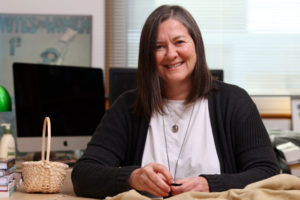Join us for our first event with Dr. Lisa Binkley, Assistant Professor, History Department, Dalhousie University, whose presentation is called “The Display of a Haudenosaunee Silk Patchwork Quilt at the Caughnawaga Grand Agricultural and Industrial Exhibition.”
Dr. Binkley’s lecture is part of a public lecture series called Representations of Colonization and De-Colonization. Drawing from art, museology, literature, science and philosophy, the series features lectures by leading international authorities exploring the exploitation, erasure, and systemic marginalization of Indigenous and Black communities and their culture in Canada and abroad.
This series will explore topics such as: Indigenous-settler relations, slavery in the north, decolonializing museums, Indigenous knowledge in anti-colonial contexts, and intersections between slavery and colonial violence against the Mi’kmaq and African Nova Scotians in the Atlantic provinces.

Dr. Lisa Binkley’s abstract:
“For centuries Indigenous peoples across Turtle Island (known as North America) have been represented by painters and photographers, who have ascribed a certain imagined, historical, and romanticized identity aimed at satisfying targeted settler audiences. Photographs have, furthermore, depicted Indigenous peoples in full regalia, and engaged in ceremony or performance, as though captured in the moment of displaying Indigeneity.
Exploration of Indigenous artistic expression as material culture, however, challenges what might be understood through a lens of visual analysis by looking past an object’s obvious appearance to its modes of making and use and through the materials used in its making.
For this talk, I will interrogate a single object – a silk patchwork quilt that is without visual representation and mentioned by the Indian Agent in his 1883 report to the Superintendent of Indian Affairs. In his report, he makes special note of the exquisite needlework of a Haudenosaunee needle artist Louise Kon8aseti Laronde that was displayed at the 1883 Caughnawaga Grand Agricultural and Industrial Exhibition, the first ever all-Indigenous exhibition in Canada.
The study of this object is indeed decolonial in its very nature and disrupts an art historical approach to examining Indigenous craft: the object no longer exists and therefore has not been evaluated for its beauty or its presence in a museum or photographic collection, and it is explored as material culture, which reframes the quilt from an Indigenous perspective, reinterpreting the object as a symbol of resistance and resilience during a period in which Canadian and provincial governments were engaged in aggressive assimilation and erasure tactics.”
For those who missed the live event, please find the video here.
